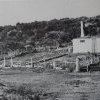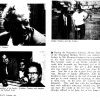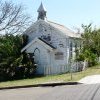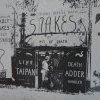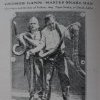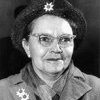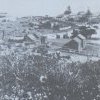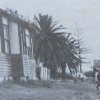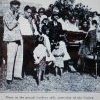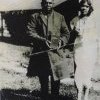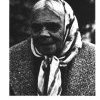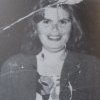1930s
1930
Opposition to ABP policies continues among people at the Salt Pan camp on the Georges River. The men go to Paddy’s Market on Friday night and speak from a fruit box. Jack recalls, when asked the question "what kind of land?" he replies, "Aboriginal land! They was askin’ for the land they was on. That’s when they was chuckin’ ‘em off. There were places around … 30 or 40 acres, 60 acres what Aboriginal people was on and they [whites] went into ‘em, run a mob of cattle through their crops and that. They only had dog leg fences then. They were pushin’ [NSW Premier] Lang at that time for land rights. That’s what it was all about, and to break up the Aboriginal Protection Board." Goodall, Invasion to Embassy, p 161.
Many Aboriginal families are living along the foreshores of Yarra Bay, Frenchman’s Bay or near Botany Cemetery. A number of the families living, some of whom have come from the Salt Pan Creek reserve, are congregating in the same area, on the edge closest to Bunnerong Road. During the depression many non-Aboriginal people as well as many Koories are living in the area. Many Koori people have been forced to reserves because they cannot get Sustenance unless they are living on a reserve. Some living near the official La Perouse reserve are not allowed to enter, for instance, white men married to Aboriginal women. Gladys Ardler, for example, lives with her non-Aboriginal father and Aboriginal mother in a camp known as Happy Valley. She recalls, "My father wasn’t allowed there [on the Aboriginal Reserve] but my mother used to go down there and see her father and her brothers and her sisters. They lived there and we just went down there for visits."
Marjorie Timbery (born 1912) comes to La Perouse in the 1930's. She recalls: "On our father’s mother's side we came from Shoalhaven and the Burrawangs. [Recording made in about 1985]. "I thank God for Captain Cook because he made people out of the Aborigines… we don’t have witchcraft, we have penicillin and antibiotics. We sit up to the table like other people and enjoy a real meal." Plater, p 113
She recalls: The 1938 celebration of 150 years of white settlement, at Kurnell, and started to cry when the Aborigines came out. "I never had, sorry to say, much experience with Aboriginal people. I was brought up with the general Australian public and when I saw something like that take place it was a real shock to me. I wasn’t used to it. I didn’t know they was up among the bush to come down. My parents stayed at Ulladulla and just visited me at La Perouse from time to time." Her father was working in a quarry at Ulladulla. "When they come to Sydney in the 1930's they move first to ‘Happy Valley’, a rapidly expanding town camp for unemployed people of every ethnicity. ‘Happy Valley’ is quite close to the La Perouse reserve. Here we used soap in the roof to stop the holes and paper for the cracks in the walls." (Plater, 118). Marjorie Timbery continues about Kooris: "We are living in Clover now. We couldn’t live on the La Perouse Reserve because there was no accommodation for us."
1931
1932
Jacko Campbell and Ted Thomas recall life in the Salt Pan Creek. Jacko: "All of them old fellas used to live out there, the Pattens and all them others. You’d see them old fellas sittin’ around in a ring, when there was anything to be done….' Ted: "They were well educated! They could talk on politics!" Jacko: "hey always DID! ... around the kids!... No matter where they went! ... Specially when there was anything to do about the Aborigines Protection Board! There was talk about writing a petition. That was always goin’ on!"Joe Anderson said he’d be talking to the Duke of Gloucester." Goodall and Cadzow, Rivers and Resilience, p 149
1933
Joe Anderson, ‘King Burraga’, speaks in a Cinesound musical from the Salt Pan. He says: "I am calling a Corroboree of the natives in New South Wales to send a petition to the King, in an endeavour to improve our conditions. All the black man wants is representation in Federal Parliament. There is also plenty offish in the river for us all, and land to grow all we want. One hundred and fifty years ago, the Aboriginals owned Australia, and today, he demands more than the white man charity. He wants the right to live!" Goodall, p 170
He is directly descended from the northern Dharawal , the traditional owners owned the Georges River area. He is the son of Ellen, whose parents are Biddy Giles and Paddy Burragalang. Speaking from the Salt Pan on Cinesound Newsreel. (A newsreel is a short news film shown before a feature film in cinemas.) Goodall and Cadzow, Rivers and Resilience, p 1
1934
1935
Many men from the Salt Pan Creek reserve travel to Paddy’s market to sell produce and also to address crowds. They include Jack Patten, Bill Onus, Bob McKenzie and Joe Anderson. Jacko Campbell remembers them asking of Aboriginal lands in these words: "They were asking for the land they were on! That’s when they were chuckin’ ‘em off. There’s places around Nowra, ‘bout 35 or 40 acres, 60 acres, what Aboriginal people was ON. And they [whites] went into ‘em, run their cattle through ‘em, mob of cattle through ‘em, through their crops and that! … They were pushin’ [New South Wales Premier], Jack Lang at that time for Land Rights. That’s what it was all about. And the break up of the Aborigines Protection Board." Goodall and Cadzow, Rivers and Resilience, p 150-151.
During the depression Nobby Eatock is heavily involved in fighting the landlords evicting tenants generally for non payment of rent. Nobby Eatock from Queensland is a key figure in the Bankstown district in the fight against evictions of families unable to pay their rent during the Great Depression. Goodall and Cadzow, p 149
1936
1937
1938
1939
The Salt Pan Creek Kooris have been evicted from the area for non-payment of rates or mortgage. Some have been moved against their will to the La Perouse reserve. Goodall and Cadzow, Rivers and Resilience, p 161
The Andersons leave the Salt Pan. The number of available places to move to with relatives, such as Herne Bay, is diminishing rapidly.












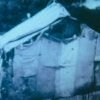

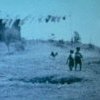
.thumbnail.JPG)
